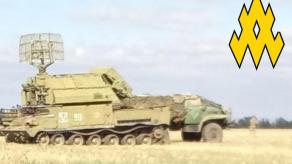Another over-the-horizon radar of the Voronezh family was attacked by Ukrainian unmanned aerial vehicles overnight May 27th. Initial reports were coming from local media, and now the Ukrainian branch of RFE/RL stated it got confirmation from sources in the Defense Intelligence of Ukraine who claims to be responsible for the strike. This time, the Voronezh-M radar system was hit, located about 1,500 km from the Ukrainian border. However, when asked by Ukrainian military official Bratchuk, the sources noted that the drone had to cross over 1,800 km to reach the radar, setting a new record for a long-range UAV strike.
Satellite imagery from May 26th and May 27th after the strike, published by the Skhemy project of RFE/RL indicate dark spots have appeared on the attacked site. The journalists assume those could be traces of fire caused by drone hits. The extent of damage is impossible to assess by these photos only.
Read more: Which Other russian Over-the-Horizon Radars Besides Voronezh-DM are Within Ukraine's Attack Range
Considering the earlier attack on the similar Voronezh-DM radar in Armavir on May 23, the effort has signs of being systematic at this point. The facilities affected by these strikes are the strategic "eyes" of russia that are designed to detect intercontinental and medium-range ballistic missiles; they are an integral component of the russian system of early warning about an incoming strategic missile strike.
While one of these radars in Armavir could observe a small part of the russian-occupied Crimea, focusing more on the eastern part of the Mediterranean Sea and Turkiye, the Voronezh-M near Orsk did not look in the direction of Ukraine at all.
That is because the task of this radar on the border with Kazakhstan is to warn about ballistic missiles flying in the sector stretching from the Persian Gulf to the Sea of Japan. That is, the responsibility of Voronezh-M near Orsk is, first of all, China, as well as India and Pakistan, and besides them the possible launch areas in the Indian Ocean. On the map below, the Voronezh-M near Orsk is numbered 9, and number 10 stands for the Voronezh-DM which is no longer active due to the earlier strike.

Therefore, if Ukraine was successful in disabling the Voronezh-M, then it would mean 50% of all over-the-horizon radars responsible for the "south/southeast" operational axis have been defeated. Although russia would still has a view towards China thanks to the Voronezh-DM near Barnaul (No.8) and Voronezh-M near Usolye-Sibirskoye in the Irkutsk Region (No.7). The distance to these from the closest theoretical launch point is about 3,200 and 4,500 kilometers in a straight line, respectively.
Also, if the radar is confirmed to be damaged, then it will again reignite the question why russia keeps strategic objects of such importance without any air defense cover. Although, the answer is quite predictable considering how even the russian most advanced S-400 anti-aircraft & anti-missile systems are being actively destroyed in Ukraine now.

Finally, Defense Express reminds that there are several more Voronezh-type radars within a quite reachable distance from Ukraine. Specifically, the Voronezh-M near St. Petersburg in Lekhtusi, 900 km away. Its observation area includes the North Sea and the North Atlantic, where the launch areas of NATO's strategic submarines are located.
Read more: Defense Express’ Weekly Review: Ukrainian UAVs Strike Voronezh-DM Over-the-Horizon Radar and 'russian Knights' Aircraft; Last Kalibr Carrier in Crimea Destroyed














